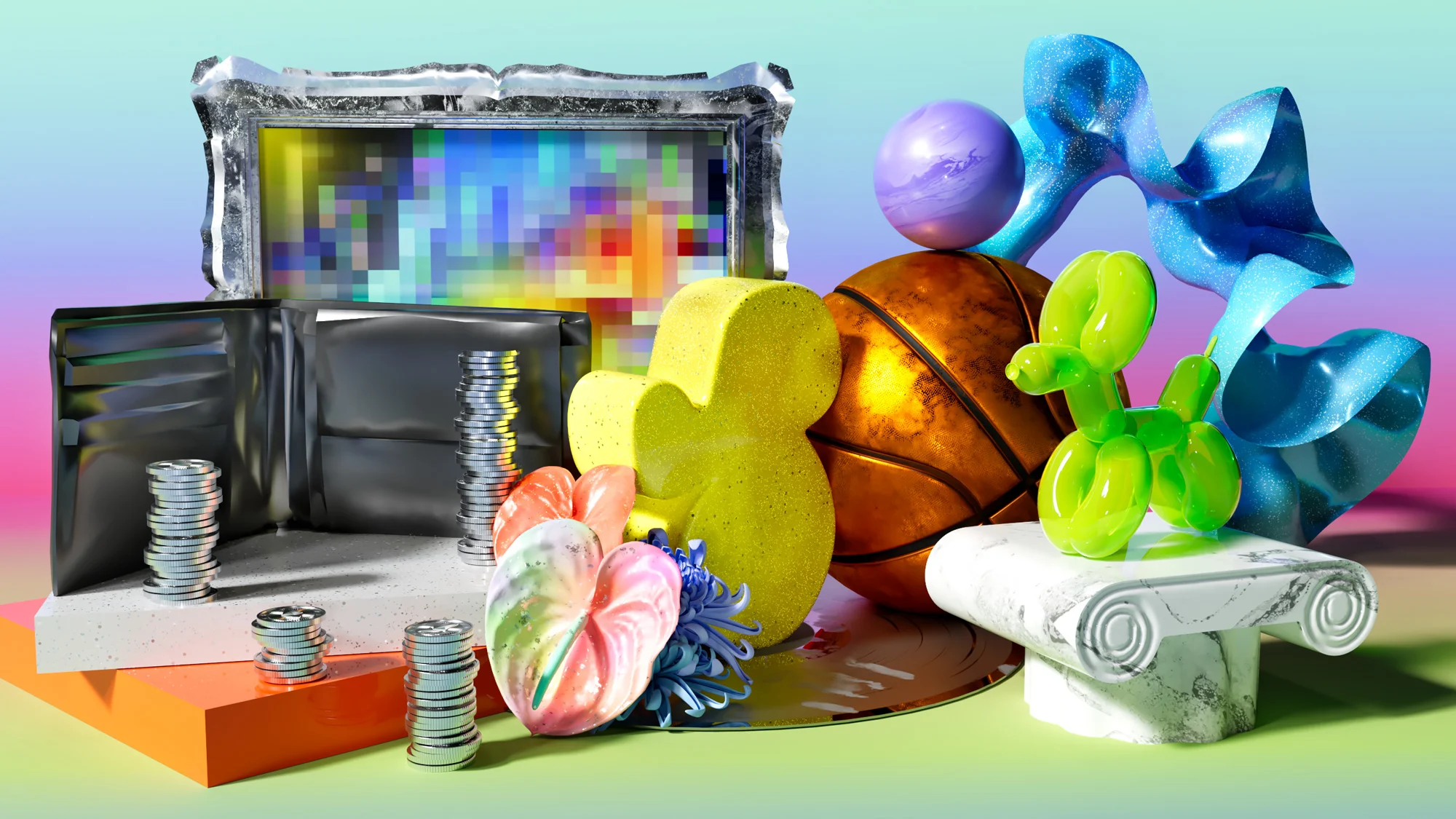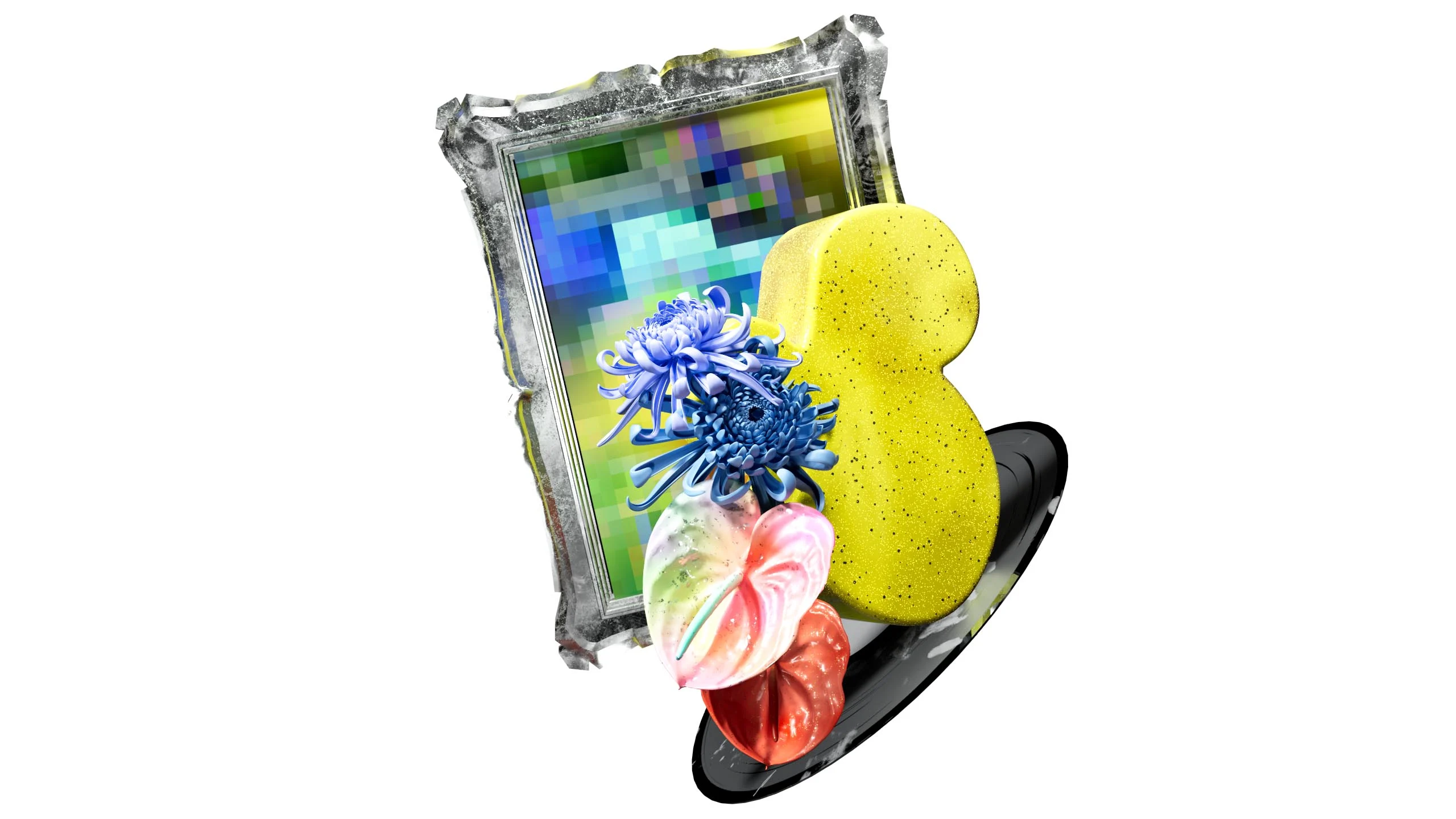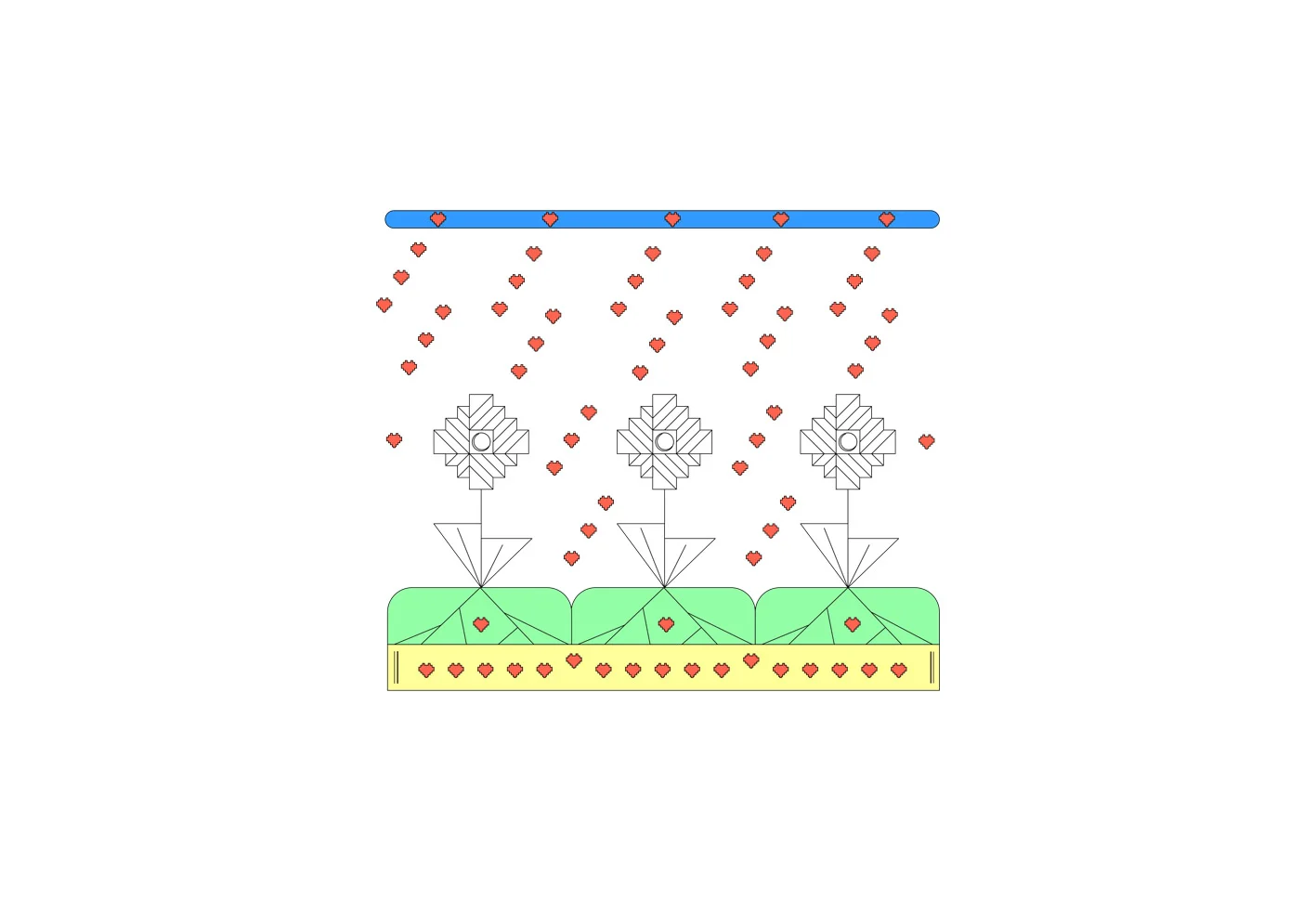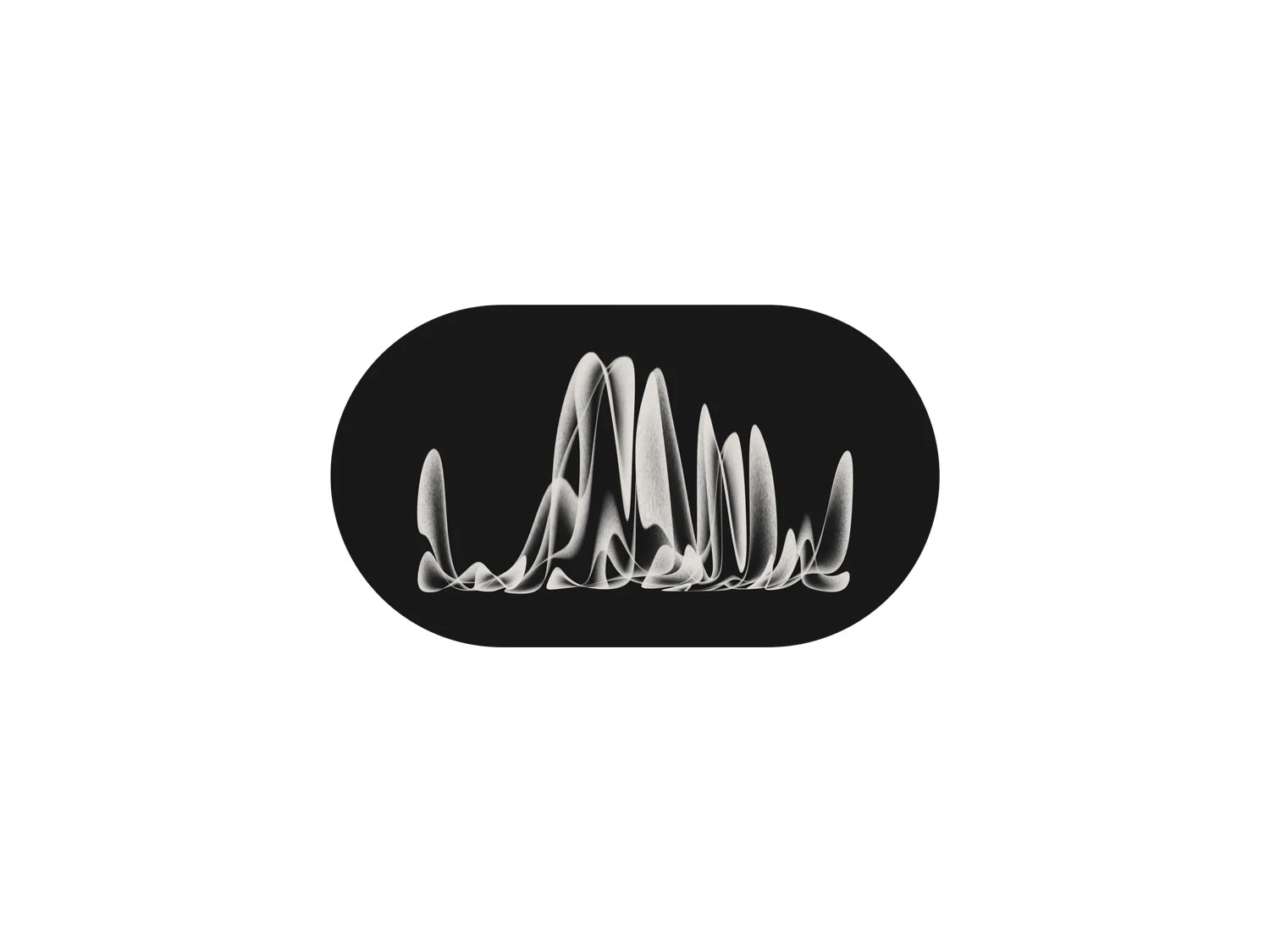

As part of our new series, Decoded, we’ve teamed up with Creative Lives in Progress to take a deep dive into emerging digital cultures and technologies. In this second article, we move into the world of NFTs, asking what opportunities the space presents for creatives, before speaking to Emily Drewry from NFT platform Voice, who shares her expert insight on this exciting new arena.
Images by Annie Ngo.
While 2021 felt like the year NFTs exploded into the general consciousness, it’s clear that they’re here to stay. It’s now almost impossible to avoid talk of their epic rise: at worst, NFTs are seen as a get-rich-quick scheme with an expensive cost for the planet. At best, they stand to create an accessible, community-driven industry that puts power and profit directly into the hands of creators. In such a rapidly evolving space, we pause to ask where the potential opportunities lie for emerging creatives.

What exactly is an NFT?
Let’s rewind a little. Put simply, an NFT is a unique digital asset that can be bought or sold. Its definition is captured in the name itself: NFT is an abbreviation for a “non-fungible token.” If something is non-fungible, it is unique or irreplaceable. So the mass-produced postcard of the “Mona Lisa” on your fridge is fungible; whereas the original “Mona Lisa” is non-fungible.
One of the reasons why NFTs can be hard to define is because any digital file can become one—from songs, artwork and clothing, to tickets, memes, video clips and more. As a result, NFTs have ignited discussions around what it means to value and own digital items, not least for the potential financial gain to be had from creating and selling them.
The world of NFTs isn’t without its challenges, though. Most NFTs are currently stored on an open-source blockchain called Ethereum—a kind of online public record that keeps track of who owns what. Computers take a lot of power and energy to facilitate all this buying and selling, which has led some to question whether the impact of NFTs on climate change can ever really outweigh their carbon footprint. As well as concerns over theft, plagiarism and fakes, or the gender disparity within the space itself.
Who is already creating and selling NFTs?
We’ve seen a whole host of people getting involved; everyone from a 12-year-old schoolboy taking up a new hobby during the summer holidays, to celebrities like Paris Hilton, Reese Witherspoon and Snoop Dogg. A wave of leading brands have caught on, too, with Nike, Louis Vuitton, Gucci, NBA, Coca-Cola, and Warner Bros all investing in the NFT space.
Some NFTs have sold for eye-wateringly high prices—you might have heard about digital artist Pak’s record-breaking NFT, “The Merge,” a conceptual artwork which sold for $91.8 million. Or visual artist Beeple’s “The First 5,000 Days,” an artwork made up of 5,000 of the artist’s other pieces, which clinched over $69 million.
There have also been memorable sales of iconic internet memes like Nyan Cat, or Twitter founder Jack Dorsey’s first Tweet. Artist Krista Kim even sold the “first NFT digital house in the world” for over $500,000 last year. While there’s no guaranteeing that all sales will match these kinds of figures, it has led many to pronounce NFTs as the beginning of a new and exciting digital creator economy.

What opportunities do NTFs offer emerging creatives?
On the surface, it can seem like the NFT world is made for digital creators. And in some ways it is—for the first time, NFTs have enabled everyone from 3D artists to digital and motion designers to sell their work independently and directly to their followers. Gone is the need to seek official representation, or appeal to the tastes of a gallery or auction house—not to mention the fact that creators receive royalties every time their work is resold. This applies to creators from pretty much any discipline; NFTs stand to offer everyone from photographers to illustrators an altogether new stream of income.
That’s not to say creators won’t need a little help, though. In the world of NFTs, cultivating an engaged online following to buy your work can be just as important as producing the work itself. So in the same way we have social media managers today, we’re also starting to see new jobs appearing for NFT community managers, marketers and curators to help find and foster new talent, grow followings and advise potential collectors.
With more companies starting to develop their own NFT strategies, brands too will be on the lookout for new talent to help them connect with audiences. From designing avatars to crypto collectibles, opportunities for 3D artists will blossom. But as NFTs—and the ecosystems that support them—continue to evolve, so too will the workforce needed to sustain them. This means that those with technical skill sets like developers, engineers and UX and UI designers will also be in high demand. And with so many industries showing early interest in NFTs, this could mean working across everything from fashion, art and events to music, gaming and sports.
Meet the expert: Emily Drewry
There’s a lot to unpack when it comes to all things NFTs, so we reached out to an expert to help offer up some more answers. Here, Emily Drewry, marketing director at carbon-neutral NFT platform Voice, outlines some of the opportunities on offer for emerging creatives, before sharing some pointers for those looking to get started.

Would you say that the NFT space suits certain creative disciplines over others?
NFTs have made digital art collectible for the first time ever. Therefore, artists who work in digital mediums like animation or 3D sculpture are seeing the most significant benefits. However, everyone can get involved in the NFT world, and right now, there is no shortage of roles that need to be filled. It's an entirely new ecosystem, which needs builders and marketers to strategists and lawyers. You will see creators, curators and engineers most commonly, but there are also community leads, project managers, and influencer coordinators.
There’s also a common misconception that you need to be tech-savvy to make NFTs. That’s what Voice set out to change. On many platforms, you need to set up a crypto wallet, get some cryptocurrency, and connect your wallet to begin minting and collecting. With Voice, you can make an account just using an email address, and experiment by minting NFTs for free, so that you’re not investing money upfront.
Do you think there’s a way to participate in the NFT space without negatively impacting the environment?
Headlines often get shortened to “NFTs = bad for the environment.” But it’s not the NFTs, it’s the blockchain they are minted on that can be good or bad for the environment. So the environmental impact is directly related to which blockchain you’re using. Voice, for example, offers carbon-neutral NFTs, because our chain is inherently environmentally friendly.

What advice do you have for emerging creatives looking to create and sell their own NTFs? What does it take to be successful?
Know why you want to be in the NFT space. Is it to sell your work, or to have a record of it? Is it to have fun and find community? Once you know your intention, show up to Twitter Spaces, join Discords, and subscribe to newsletters. You’ll be able to find people who are doing it for a similar reason and who can help guide you through it.
Minting NFTs means you’re putting something on a blockchain permanently—no edits. So be thoughtful with your naming, descriptions and pricing. It’s important that you demand a fair price which compensates for the time and resources used to create your work.Collectors want to know that your pricing is intentional, so don’t vary too much from piece to piece—unless they were created using drastically different methodologies. And keep in mind that if you don’t have a reputation of some sort publicly, it may be hard to sell your NFT if it’s priced too high.
A lot of people think NFTs are an instant success mechanism. That can be the case, but in reality, they’re more of an alternative sales strategy. You need to be patient and comfortable sharing your story, it takes time to properly build up recognition. Also, ignore any accounts that offer to promote your NFTs for you—99% of them are scams!




